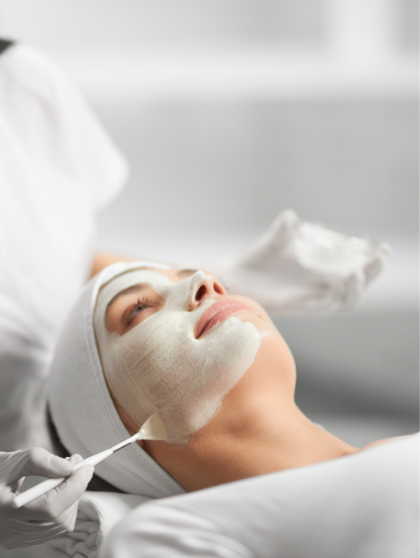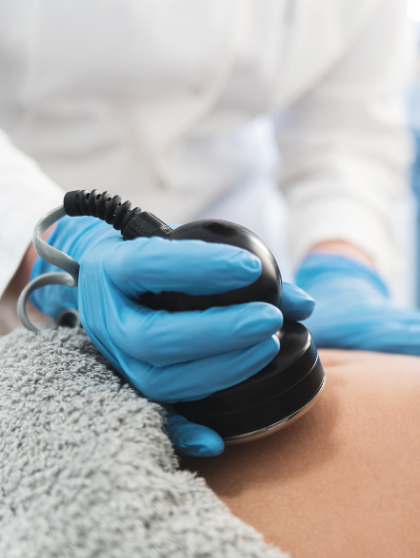
Hyaluronic Acid is a substance that helps in restoring moisture to the skin. It has a wide range of applications in medicine, including the treatment of aging. This article discusses some of its benefits, and its applications.
What is the Synthesis Pathway of HA?
Hyaluronic Acid (HA) is an important polymer and building block in the production of biomaterials and therapeutics. It is present in most vertebrate tissues, including the extracellular matrix, which plays a vital role in wound healing, tissue reorganization, and inflammation.
The synthesis pathway of HA begins with the formation of glucose-6-phosphate. It is subsequently converted into uridine diphosphate-glucose (UDP-GlcUA) and glucosamine-1-phosphate. A glycosyltransferase catalyzes the first step of the pathway. This is followed by pyro phosphorylase, which transfers the phosphate group to UDP-GlcNAc.
In addition to its biomedical applications, hyaluronic acid is also known to possess bactericidal properties on several platforms. However, the bactericidal activity of HA depends on the concentration, the type of bacteria, and the local environment. If it is combined with other bactericidal molecules, it can improve its antibacterial effects against drug-resistant bacterial strains.

During the biosynthetic process, a series of enzymes are involved, including non-processive glycosyltransferase, phosphoglucomutase, and acetyltransferase. These enzymes produce glucose-6-phosphate, glucosamine-1-phosphate, and glucuronic acid, which are the precursors of HA. As a result, the yield of HA is low.
It is believed that short fragments of HA, which are approximately 4 to 5,000 disaccharides, serve as signals for tissue repair. They also have inflammatory and immunostimulatory properties.
As a result, hyaluronic acid is a promising candidate for the treatment of infected wounds. Its bactericidal properties can be boosted by incorporating it into an antimicrobial coating.
What is the Application of Hyaluronic Acid in Medicine?
Hyaluronic acid (HA) is a biodegradable polymer found in most body fluids, including blood, tears, and saliva. This naturally occurring chemical has been used for wound healing and tissue engineering. It is also commonly found in cosmetic products such as creams, lotions, primers, foundations, and makeup.
Hyaluronic acid is a component of the extracellular matrix in vertebrate tissues. When HA binds to certain receptors on the cell surface, it can influence cell-matrix interaction, signalling, angiogenesis, and inflammation.
The receptors for hyaluronic acid include CD44 and RHAMM, which are involved in HA-mediated motility. Other receptors include VEGF, osteopontin, and dermatan sulphate.
The biochemistry of HA differs depending on its molecular weight and structure. Cells can cleave HA in a single unit or in multiple glycosidic bonds. However, the chemical process that occurs for a high molecular weight HA is very similar to that of a low molecular weight HA.
HA hydrogels are synthesized by cross-linking HA molecules with divinyl sulfone. These hydrogels have shown excellent mechanical and viscoelastic properties. In addition, they have been used in aesthetic medicine and tissue engineering applications.

Enzymatic destruction of HA is a significant issue for future biomedical product development. Several enzymatic mechanisms have been identified, including b-N-acetyl-hexosaminidase and b-D-glucuronidase. During enzymatic cleavage, the b-N-acetyl group is eliminated and the resulting fragments are smaller.
Hyaluronic acid is found throughout the body and is abundant in the vitreous humor of the eye. In fact, it is a major component of the extracellular matrix in many mammalian and avian tissues. As we age, our natural production of HA decreases.
HA is used in a variety of medical applications, including ocular surgeries, dermal fillers, and Visco supplementation. As we continue to discover the numerous ways HA can be applied, more uses may emerge.
What are the Benefits of HA?
Hyaluronic acid is a mucopolysaccharide found naturally in the human body. It is used in medical treatments to reduce swelling and pain of joints and skin. In addition, hyaluronic acid has been studied for reducing acid reflux and dry eye symptoms.
The human body produces a small amount of hyaluronic acid each day. During aging, the amount of hyaluronic acid decreases. If you take hyaluronic acid regularly, it can help to keep your skin hydrated and improve the appearance of wrinkles.
Hyaluronic acid is usually taken orally or by other means. There are a few dietary supplements containing hyaluronic acid. Many of these products are available over-the-counter. Others require a prescription from a doctor.
Some people apply hyaluronic acid directly to their skin to relieve dryness. They may use it on dry lips, and skin wounds. To get the most benefit from hyaluronic acid, you should apply it at least eight hours per day.
A reliable recent study found that hyaluronic acid was effective in reducing the pain and stiffness of people with arthritis. It also helped improve the bonding of bone grafts.
There is a lot of buzz around the medical grade hyaluronic acid (HA) found in a number of skincare products and cosmetics. A good place to start is by using sunscreen and minimizing the amount of time that your skin is exposed to the sun. If you choose to use a topical HA cream, make sure to apply it to your face and neck as this area is the most susceptible to sun damage. The same rules of thumb apply to your hands and arms. While using a topical HA cream, you should always wash your hands thoroughly afterward.
In Conclusion
Hyaluronic acid is an important component of the body's synovial fluid, which helps absorb shock and repair injured tissue. It is naturally present in the body's cartilage, tendons, and joints. As we age, our body's hyaluronic acid levels decrease. This is believed to contribute to some of the most common age-related diseases.
People with pre-existing liver conditions should also avoid using hyaluronic acid. Those who have received radiation, or who are pregnant or breast-feeding, should also be careful. Other methods of using hyaluronic acid include topical applications, oral intake, and combination products.






